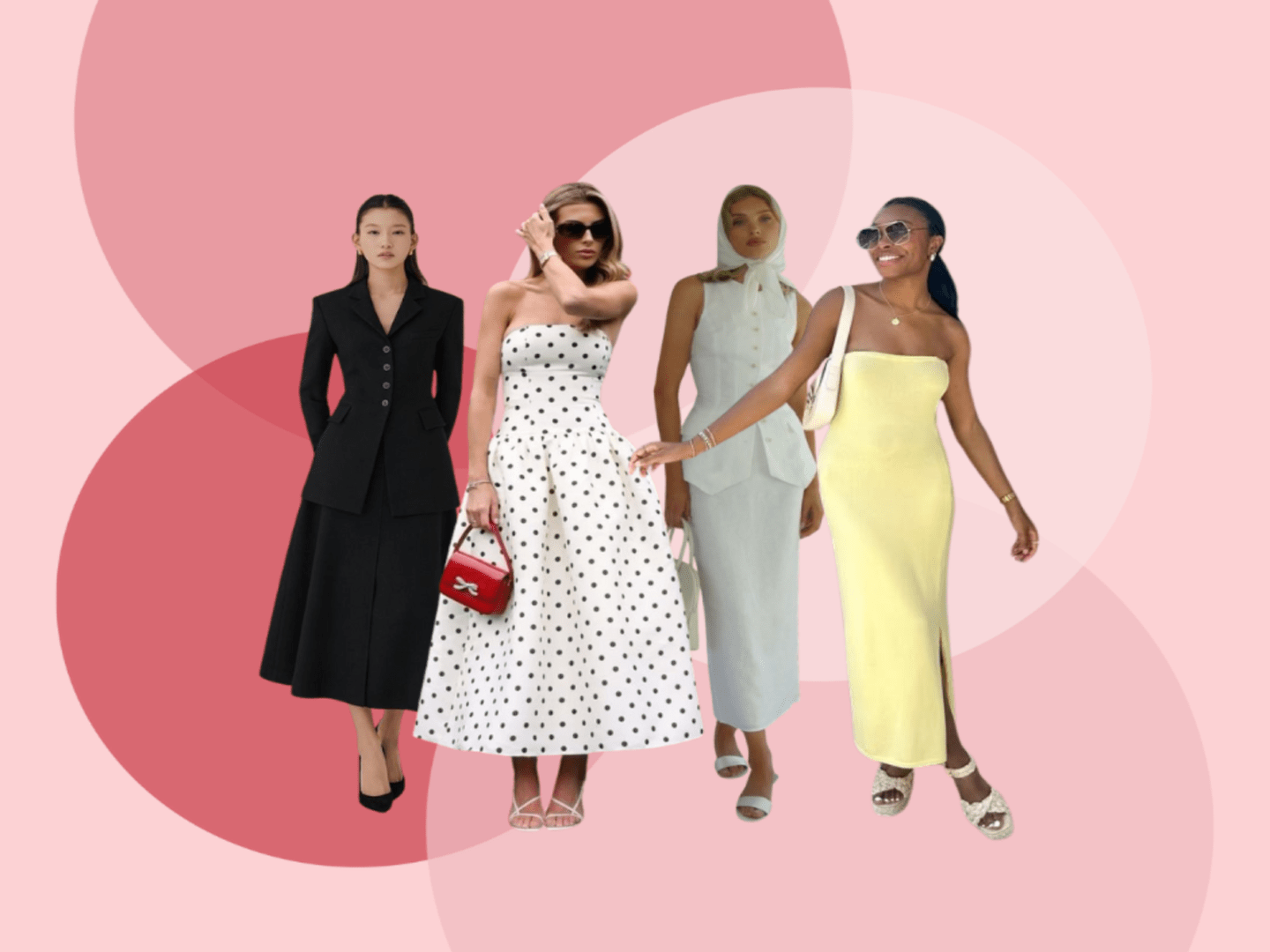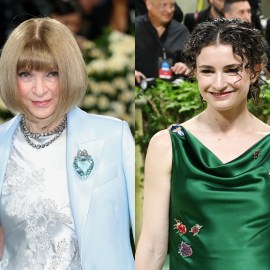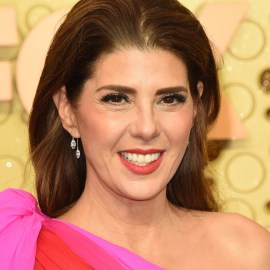Somewhere on the corner of 57th and Lexington, I caught myself pausing at a crosswalk behind a girl in a chamomile-colored skirt that brushed her ankles despite the blistering summer heat. She wore a pearl-encrusted headband and thick white socks tucked into Mary Janes, her sweater — butter-yellow, cable-knit, and a size too big — clung to her shoulders like it belonged to someone else. She looked soft, practically spotless, and for a second, I thought she looked exactly like one of the Pinterest pins I saved a week ago tagged “clean girl” and “coquette.”
She stepped into the crosswalk and vanished amongst the crowd, where it struck me just how many women were dressed exactly like her. Long skirts, long sleeves, high necklines. Tidy, sporting faint tones and dull hues. If you saw them from across the street, you’d think they could blend into the background of a painting. As I kept walking, I started counting. I stopped at six maxi skirts before I reached the end of the block.
I don’t know when it changed, exactly. It wasn’t like a season flipped and suddenly everyone covered up. It was more like the color slowly drained from the room, like the light shifted while we weren’t looking. Two years ago, every hot brunch spot was a parade of mesh, cutouts, chainmail tops, tiny dresses, and tiny bags. We were loud then, dressed like we were trying to scream with our bodies.
Fashion has always been a cipher, tracking the pulse of the times; it’s how a nation dresses up its subconscious. The hemline index, a concept introduced in the 1920s, indicates that skirt lengths rise and fall with the economy. When the economy is booming, skirts get shorter. When it crashes, skirts lengthen. But what if the index needs a rewrite? What if morality, politics, and fear play more of a role in societal changes than previously thought?
Hemlines got shorter in the 1920s because of a roaring economy and the empowerment produced by first wave feminism, most famously represented by Coco Chanel’s Little Black Dress. However, hemlines lowered with depression in the ‘30s, while the decade of war in the ‘40s brought flak jackets and surplus trench coats with it. By the swinging ‘60s, shorter hemlines made a dramatic return as second wave feminism spread like wildfire. Although hemlines fluctuate with the times, one thing has remained consistent: the female body has historically been displayed or covered up based on the prevailing mood of a country.
The aesthetic of the hour is modest, refined, and just shy of severe with long skirts, high necklines, and thick fabrics that feel vaguely puritanical. Even the color palette has shifted: away from saturated neon or expressive prints, toward browns, taupes, and the same mild “butter yellow” as government stationery. Gen Z, supposedly the generation of rupture and rebellion, shockingly doesn’t seem to be putting up a fight against America’s changing culture.
And it’s not that I think the new aesthetic is ugly; quite the contrary. Sometimes I look at what’s trending and feel a strange sense of longing. I like the softness, the order, the placidity of pastels. On certain days, when I’ve had a hard week or the news is too loud or I just don’t want to be looked at, I’ll reach for a long skirt and a vintage cardigan and feel safer somehow. Not just covered, but smaller. Contained, the way a doll is safely kept in a box. But then I’ll catch myself in the mirror and wonder what exactly I’m dressing for. And more importantly: who.
Although what becomes a trend often appears to be arbitrary, society’s invisible strings are always being tugged at by those in power. Governments across the globe are legislating modesty and pushing for conservative doctrines, while traditional gender roles are being repackaged as refuge and empowerment. It would be easier to believe that the new trends this summer are just a passing phase, if it weren’t for the headlines that keep reminding us, again and again, that the rights we thought we had were never as solid as we believed.
In the past few years, several U.S. states have introduced or passed legislation reinforcing the power of the patriarchy while attacking women’s rights. From abortion restrictions to the destruction of DEI programs to the erasure of women’s contributions to history, these policies govern female bodies while simultaneously affecting how femininity is perceived across the nation. And, whether intentionally or not, a growing portion of young women are beginning to reflect America’s changing culture on their bodies. Some call it soft conservatism, others call it repression in a beige trench coat, but either way, we’re actively witnessing gender equality backslide like never before.
The fashion industry, of course, claims otherwise. Designers argue that longer lengths are merely a return to elegance, a much-needed palate cleanser after the vibrant, maximalist upheaval of the early 2020s. But if you look closely, these silhouettes are evidently far more than just aesthetic choices. And there’s something especially haunting about the way modesty has rebranded itself to adapt to modern society. On TikTok, #modestfashion has over 12 billion views.
The language around it has shifted, too. “Feminine.” “Elegant.” “Clean.” All words that sound lovely, sure, but if you tilt your head, they start to sound like reminders: be quiet, be soft, take up less space. Some of the most viral creators are women around my age who layer long skirts over blouses and describe their style as “old money” or “subtle.” They do GRWMs where they speak in hushed voices and pair butter yellow dresses with pearl earrings and say things like “I just feel more like myself this way.” But I wonder: which version of themselves do they mean? And how much of that self is theirs, and how much of it is what we’ve all been told to be?
I remember the day the Supreme Court decision on abortion dropped. Even in New York, where I knew my rights were technically protected, I didn’t feel safe. It felt like the ground had shifted, like something ancient and domineering had woken up beneath us. When I started my first year of college at WashU in St. Louis in the fall, it hit me even harder. Missouri had a trigger ban; abortion became illegal almost immediately. I remember one night in the library, overhearing two girls whisper about how far they’d have to drive — Illinois, maybe Kansas — if something happened. I watched them mouth the word abortion like a dirty word, a word that’s only fictional as long as you don’t utter it out loud.
Post-Roe America is different. For Gen Z women, the reversal of constitutional protections was a psychological event as much as, if not more than, a legal one. Suddenly, the body became a battleground again. For a generation raised with modern feminist icons, the rise of conservative fashion can initially seem like a new form of agency. To cover up can feel like a considerable form of resistance. But sometimes it can also feel like surrender, especially if it’s not of your own volition. Either way, it’s impossible to separate what’s trending from the larger forces at work — forces that want to re-domesticate the female body and punish it for being difficult to control. We are witnessing, in real time, a visual negotiation of power.
At the same time, it’s no secret that America’s political landscape is changing. According to Tufts’ CIRCLE, young voters skewed more conservative in the 2024 election than in previous years, potentially impacting the sense of nostalgia woven into this season’s fashion era. Butter yellow. Polka dots. Peter Pan collars. The aesthetic of the 1960s housewife is creeping back into pop culture; think Mad Men or The Stepford Wives, but without the irony. Women are dressing like characters in a story that someone else wrote for them, because someone else did write it for them. When girls start dressing like tradwives before they’ve even graduated high school, it begs the question: “Are we choosing this look, or is it choosing us?”
I’ll admit, it feels strange sometimes to criticize something that on the surface looks so preciously harmless. A long skirt doesn’t hurt anyone, and Peter Pan collar is just a neckline. Yet when those styles come back en masse, at the same time as school dress codes get stricter, books are banned, and conservative lawmakers start talking about decency like it’s the 1950s, it’s difficult not to feel like something larger is happening. Ultimately, what’s unnerving about the return of long skirts isn’t the skirt itself. It’s the silent return of expectations that women have worked so hard to escape, the packaging of repression as elegance. Fashion is always political, even when it pretends not to be. Especially when it pretends not to be.






